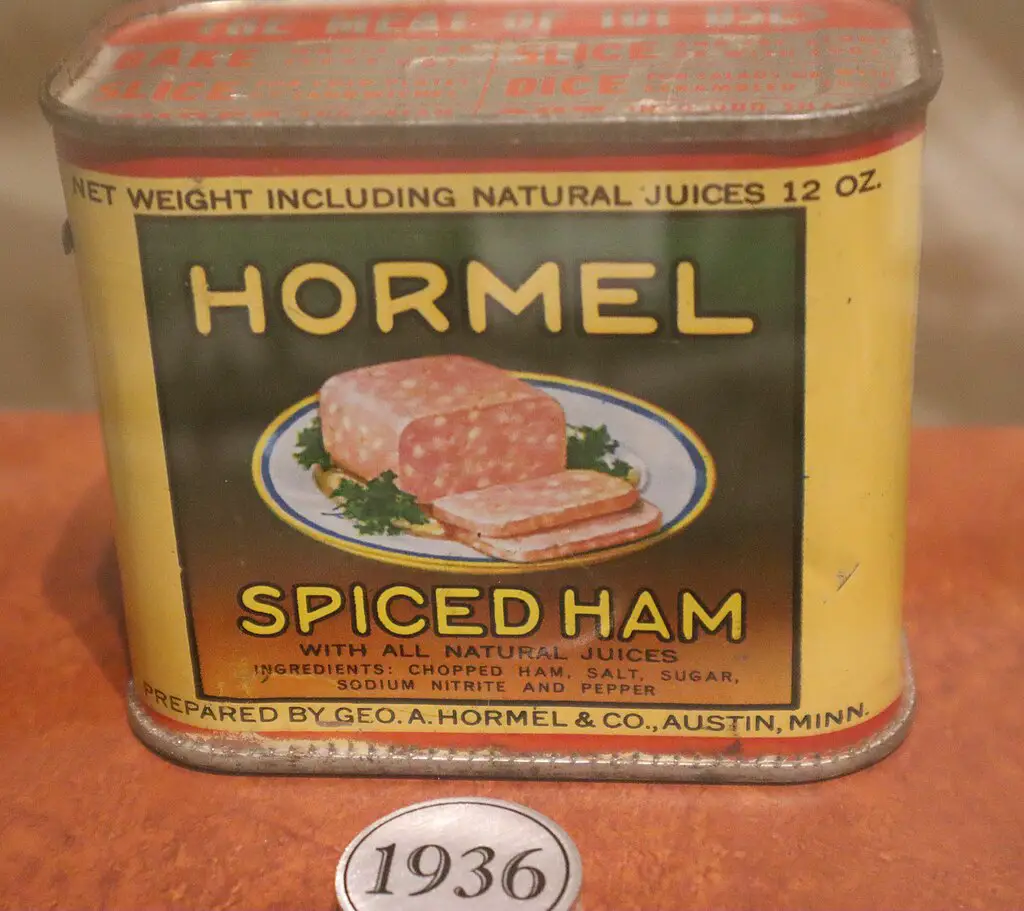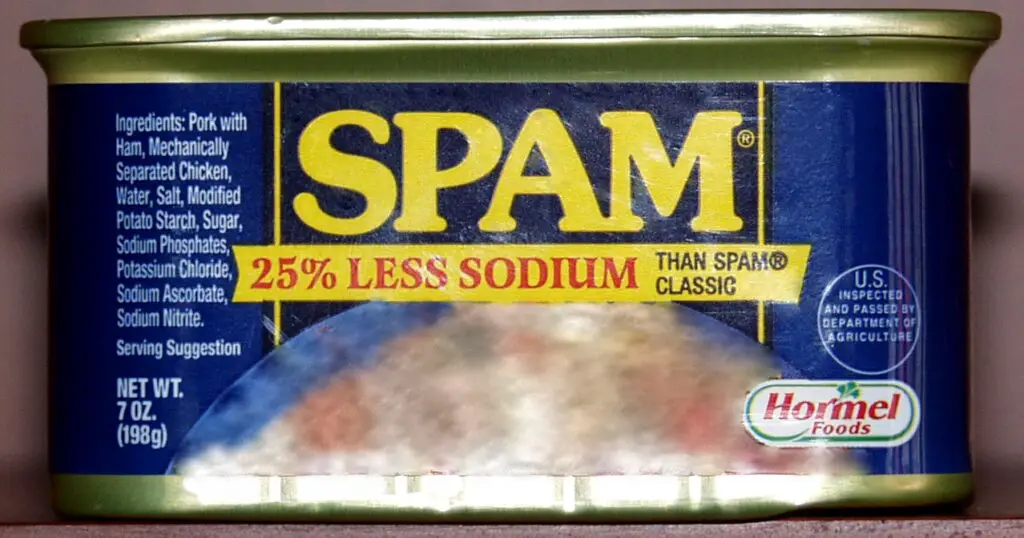SPAM was first introduced in 1937 by Hormel Foods Corporation as a convenient, affordable canned meat product. The timing of its release coincided with rising demand for preserved foods, especially during the Great Depression. By using pork shoulder — a less expensive cut of meat — Hormel created a shelf-stable product that didn’t require refrigeration, making it ideal for households and later, military operations.

What Does SPAM Stand For?
The name “SPAM” has long sparked curiosity. While Hormel officially maintains that it stands for “spiced ham,” various theories have gained popularity over the years. Some believe it stands for “Shoulder of Pork and Ham,” while others say it may mean “Specially Processed American Meat.” Despite the speculation, Hormel’s version remains the most widely accepted and promoted by the brand itself.
SPAM’s Role in World War II
SPAM became a vital source of nutrition for U.S. troops during World War II. Its long shelf life and portability made it ideal for military rations. Over 100 million cans were distributed to Allied soldiers during the war. As American troops moved across Europe and the Pacific, SPAM also spread to global markets and became integrated into the cuisines of countries such as South Korea, the Philippines, and Japan.

Global Popularity and Cultural Impact
In places like Hawaii, SPAM is more than just a food item — it’s a cultural staple. Dishes such as SPAM musubi (a sushi-like snack with rice and seaweed) showcase the creativity with which local communities have embraced the product. Similarly, in South Korea, SPAM is a popular gift during holidays and is commonly used in budae jjigae, also known as “army stew.” Its wide availability and versatility have made it a beloved pantry item worldwide.

What’s Inside a Can of Classic SPAM?
According to Hormel Foods and verified by USDA labeling, the classic version of SPAM contains only six ingredients: pork with ham, salt, water, sugar, potato starch, and sodium nitrate. Pork with ham refers to pork shoulder meat combined with ham. Salt and water serve as basic flavor enhancers and emulsifiers, while sugar balances the taste. Potato starch helps bind the ingredients and maintain the product’s texture. Sodium nitrate is added as a preservative to ensure food safety and extend shelf life.
Understanding Sodium Nitrate
Sodium nitrate is commonly used in processed meats like bacon, sausage, and deli meats. It helps prevent bacterial growth, particularly botulism, and preserves the pink color of the meat. Naturally occurring in vegetables like spinach and celery, as well as in some drinking water, sodium nitrate is safe in small amounts. However, organizations like the World Health Organization (WHO) and Centers for Disease Control and Prevention (CDC) warn that excessive intake over time may increase the risk of colorectal and other types of cancer.
Recommended Safe Consumption Levels
The World Health Organization recommends a daily nitrate intake of no more than 3.7 milligrams per kilogram of body weight. For a person weighing 70 kg (about 154 lbs), that equals around 259 milligrams per day. Since nitrate levels are not always listed on nutrition labels, it can be challenging to monitor daily intake. Nonetheless, moderate consumption of SPAM, especially when part of a balanced diet, is generally considered safe.
SPAM’s Nutritional Profile
A single 2-ounce serving (56 grams) of classic SPAM contains approximately 180 calories, 16 grams of total fat (including 6 grams of saturated fat), 40 milligrams of cholesterol, 790 milligrams of sodium, and 7 grams of protein. The high sodium content makes SPAM less suitable for people with high blood pressure or heart disease. However, it offers a convenient protein source for people with limited access to fresh meat or refrigeration.
Modern Variants for Health-Conscious Consumers
To meet the evolving preferences of consumers, Hormel has expanded its SPAM lineup to include several variations. SPAM Lite contains less fat and sodium, while SPAM Less Sodium reduces the salt content by 25% compared to the original. Flavored options like Hickory Smoke, Jalapeño, Teriyaki, and SPAM with Cheese offer diverse tastes while maintaining the core ingredients. These alternatives provide more choices for people looking to enjoy SPAM without compromising on dietary goals.
SPAM in Today’s Diet: Occasional Treat or Daily Staple?
Whether SPAM should be a daily food item depends on individual health needs and overall dietary balance. Public health experts, including those from the American Heart Association and the American Institute for Cancer Research, recommend limiting the intake of processed meats and instead focusing on whole foods like fruits, vegetables, and lean proteins. That said, enjoying SPAM in moderation — especially in meals that include fiber-rich vegetables and whole grains — is a realistic and culturally accepted part of many diets.

The Legacy and Longevity of SPAM
More than 85 years after its introduction, SPAM remains a recognizable and resilient brand. Its ability to adapt to changing markets, expand into international cuisines, and offer product variations has helped maintain its popularity. The SPAM Museum in Austin, Minnesota, even celebrates the brand’s history, cultural significance, and global influence. Despite criticism of processed meats in general, SPAM continues to thrive as a practical, nostalgic, and versatile food option.
Final Thoughts: Is SPAM Safe and Worth Eating?
SPAM, when consumed responsibly and in moderation, can be a safe and enjoyable food. Its ingredients are clearly listed, and its safety is supported by decades of manufacturing standards set by regulatory agencies such as the USDA. Like all processed foods, it should be part of a diverse and balanced diet, not the centerpiece. For those who appreciate its taste and convenience, SPAM remains a reliable pantry option backed by a long history and trusted brand name.
